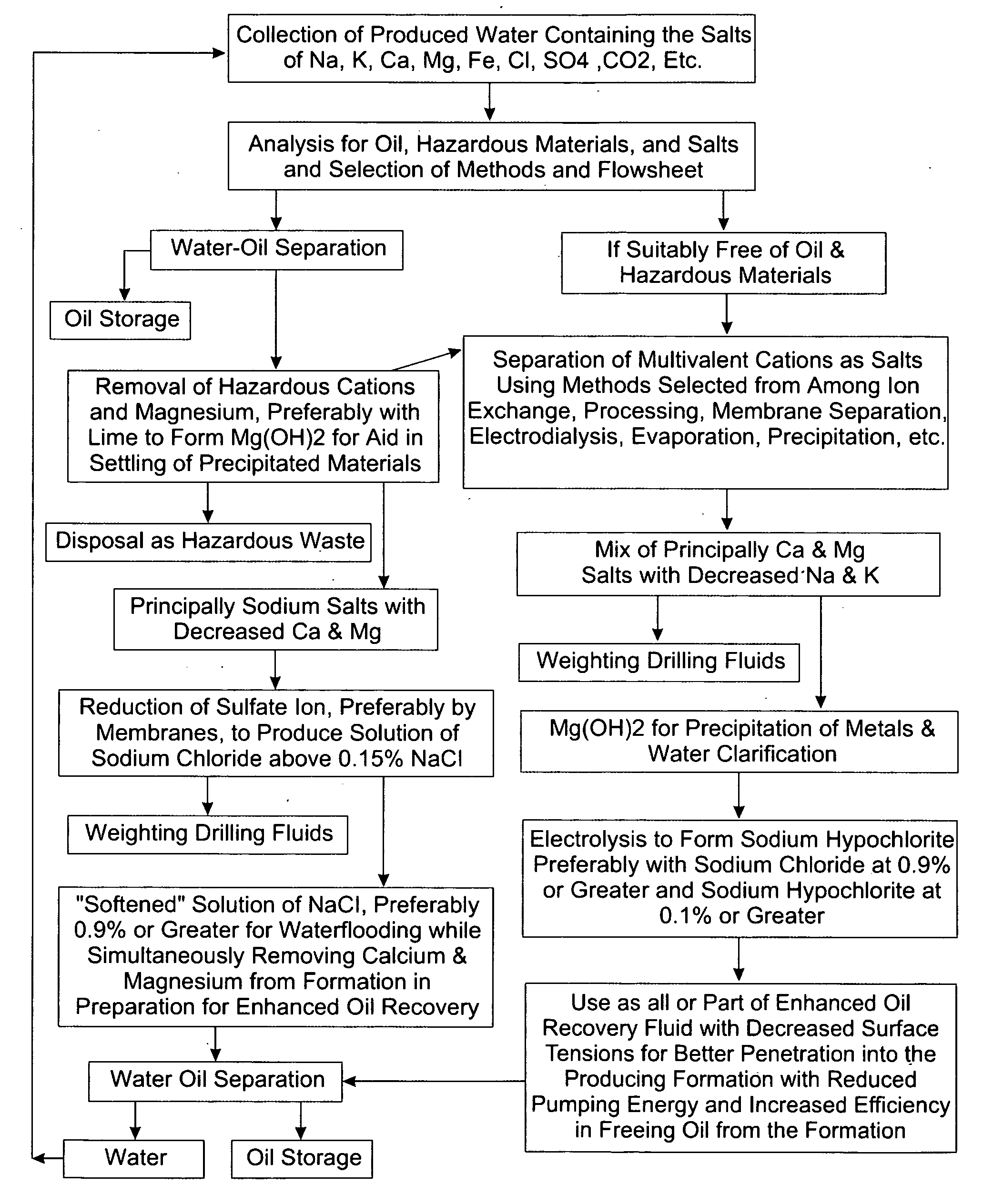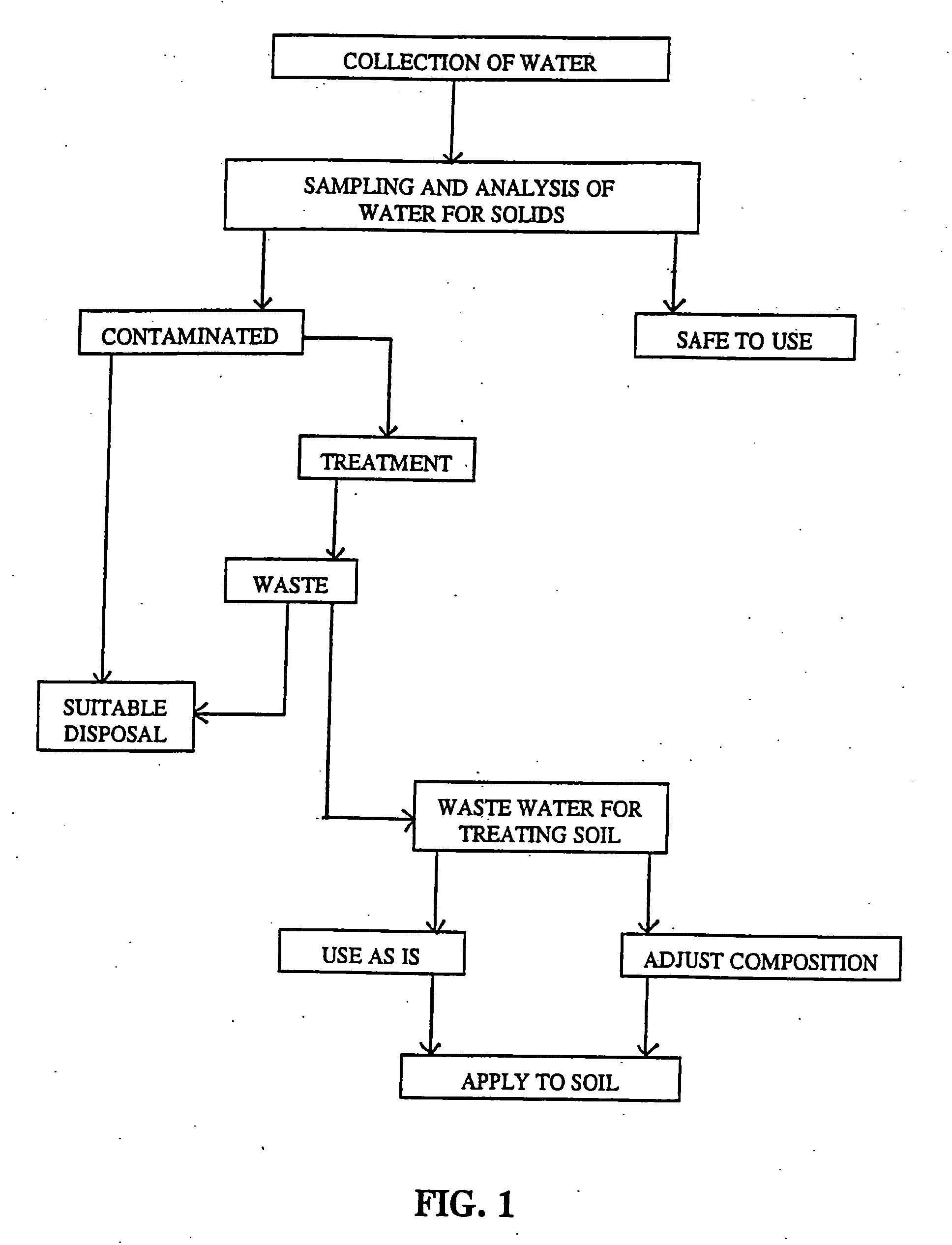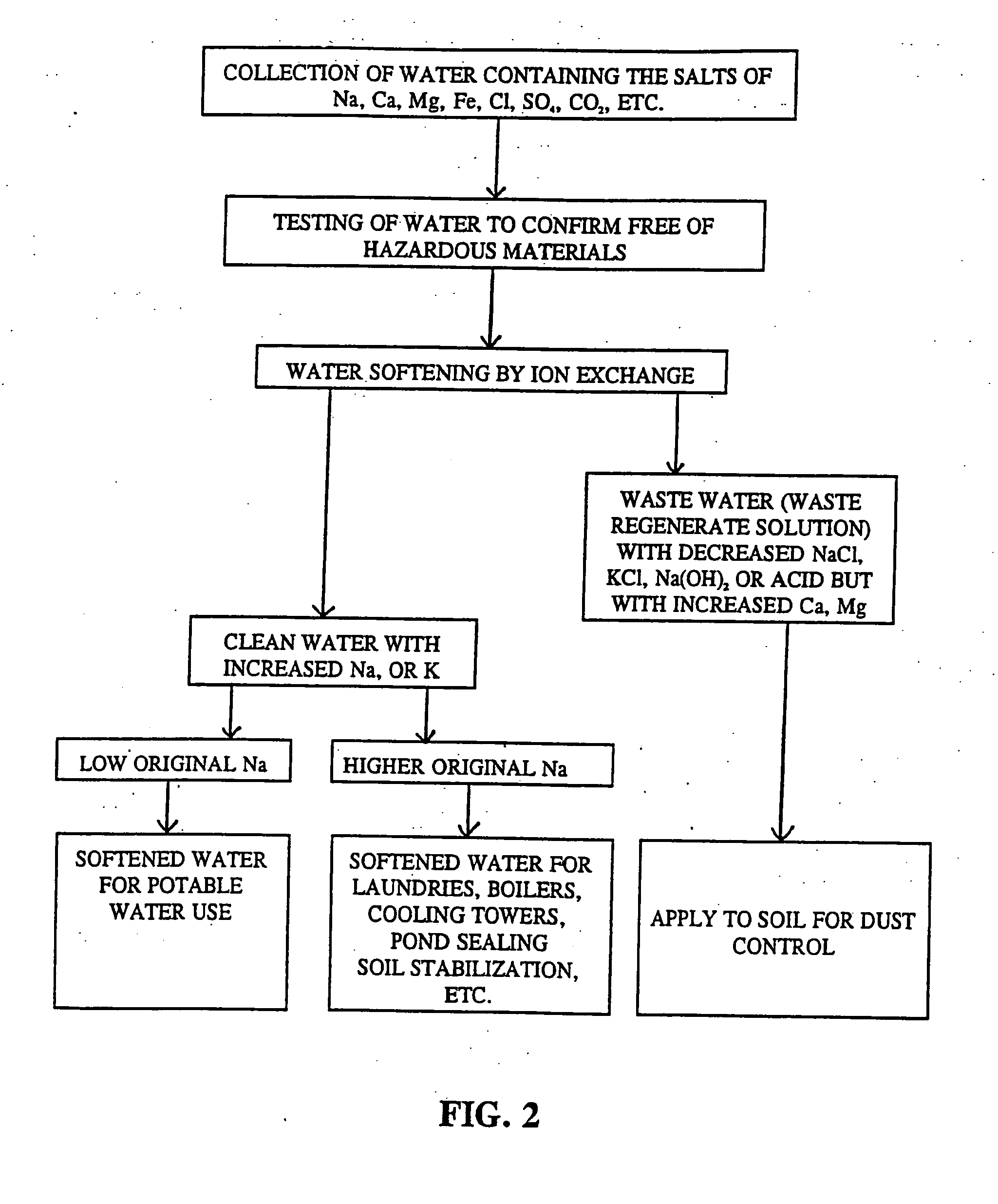Mothods of utilizing waste wasters produced by water purification processing
- Summary
- Abstract
- Description
- Claims
- Application Information
AI Technical Summary
Benefits of technology
Problems solved by technology
Method used
Image
Examples
example 1
[0067] Approximately 2.7 miles of road in the Mojave Desert of California is treated with waste water containing approximately 12.5% total salts, and in particular, about 1.37% calcium chloride, 0.39% magnesium chloride and 10.7% sodium chloride. After treatment, the road underwent periodic truck traffic. Visual comparison of dust produced by truck traffic is measured against a section of road which has not been treated. Following a rain, dust starts to be visible from a one mile distance within 2-4 days for the untreated road, while dust starts to be visible from the one mile distance within 10-20 days for the treated section of road.
[0068] Thereafter, waste water applications are increased for a three month period. The amount per application is the maximum that the soil will absorb without turning muddy. Then, the applications are ceased. The road is examined over the next year and found not to exhibit any significant dusting. In addition, there is a distinct reduction of washboa...
example 2
[0069] Approximately one mile of dirt road in the Mojave Desert is treated with a mixture of sodium, calcium and magnesium salts. Application of the untreated waste water proves effective for effecting soil stabilization. Compared to untreated sections of the dirt road, the soil is found to be more stable and less prone to being spread by rainfall, and is found to be much less prone to washboarding and potholing.
[0070] With reference to FIG. 5, in a fifth preferred embodiment of the present invention, water is collected which is contaminated with the salts of Na, K, Ca, Mg, Fe, Cl, SO4, and / or CO3. The contaminated water is then tested to determine that it is free of hazardous chemicals, and if the water is determined to sufficiently free of hazardous chemical, the water is purified by water softening, such as by ion exchange. As shown, ion exchange produces an first effluent of clean water which typically has a high sodium content. As explained with reference to FIG. 2, where the ...
example
[0124] This is demonstrated by California's use of something over 300,000 tons of calcium sulfate from mines as a soil amendment each year for mitigating the effects on soils caused by sodium brought to the fields by irrigation water. The irrigation waters brought into the San Joaquin Valley contain approximately 1.6 million tons of chloride salts per year. The Salton Sea receives about 4 million tons of salts per year from all forms of runoff, of which 60% or more is brought in with the approximately 3 million acre feet of Colorado River Water used yearly for irrigation.
[0125] Sustainable agriculture in California requires the removal of a minimum of about 5-6 million tons of salts each year from salty irrigation drainage whether from runoff or from a rising salty water table. Though some salts may be exported, to avoid the dollar and environmental costs of stockpiling waste, most salts find domestic uses. I have found that large tonnages of sulfate salts can be recovered for use ...
PUM
 Login to View More
Login to View More Abstract
Description
Claims
Application Information
 Login to View More
Login to View More - R&D
- Intellectual Property
- Life Sciences
- Materials
- Tech Scout
- Unparalleled Data Quality
- Higher Quality Content
- 60% Fewer Hallucinations
Browse by: Latest US Patents, China's latest patents, Technical Efficacy Thesaurus, Application Domain, Technology Topic, Popular Technical Reports.
© 2025 PatSnap. All rights reserved.Legal|Privacy policy|Modern Slavery Act Transparency Statement|Sitemap|About US| Contact US: help@patsnap.com



